|
By Manuel Players: 1 Platforms: Nintendo Switch, PlayStation 5, PC Rhapsody: Marl Kingdom Chronicles is a new collection from NIS that rounds out the Rhapsody series with the two sequels we never got in the US. The two-game package includes Rhapsody II: Ballad of the Little Princess, which follows Cornet's daughter Kururu, and Rhapsody III: Memories of Marl Kingdom, which features five smaller stories that round out and conclude various story aspects of the first two games. These games originally released on the PlayStation and PlayStation 2 respectively and they're now arriving on the PS5, Switch, and PC. I previously reviewed the first part of the collection HERE, and now we're going to dive into Rhapsody III: Memories of Marl Kingdom and see if what the Rhapsody series needed all along was an episodic story structure! Rhapsody III: Memories of Marl Kingdom is a weird game in many ways, not the least of which is its story, or should I say "stories". The game has five main chapters, and a bonus sixth one that acts as a sort of Boss Rush mode. The five main chapters tell their own individual stories with a set of characters that are unique to it. Each unlock after you clear the one before it, but they're actually not presented in any particular order. The first chapter takes place during Rhapsody I and features Cornet and company helping an Ellinger reunite with her mom. The second chapter actually concludes the entire series (I know, kinda early huh?) with an older Kururu getting ready for her marriage with Cello and encountering some familial pushback. Technically the third and fourth chapters can be played in any order, but the first features the Marjoly Family searching for their missing Nyankos, and the other tells a more detailed account of the tragic love story between Pekonyan and Pokonyan leading right up to the start of Rhapsody II. The fifth and final chapter is the only one really worth talking about and follows the life of Cornet's mom Cherie from her youth to her death in the events that lead up to the first Rhapsody game. I'll talk more about the Cherie chapter later, but it's the only one that has a story that progresses beyond one key event and is the only one to have sub-chapters within it. I was somewhat flippant about the sixth chapter but it does have a main boss that weaves its way through the other chapters. This isn't really anything important though, and definitely a big letdown once you see them, but it does try to be something of a conclusion to not only the game, but also the series as a whole. Dungeon exploration is the name of the game here. Each chapter, baring the one involving Cherie, is really short and only has bookended story sections with really long dungeon sections in-between. The dungeon design isn't exactly groundbreaking, but it's unfortunately central to every chapter. Each chapter has a town or shop and then some sort of route that leads to a dungeon or two. If you're lucky you'll have NPCs to tell you where to go next, but there are more than a few times where the game is surprisingly cryptic for being so small in scope. All chapters have some optional sections to complete, but most of these only serve to pad out your time in the dungeons as very little carries over between chapters. As it stands the first four chapters only take about two hours or so to complete and about 90% of that will be you exploring dungeons that aren't necessarily complex, but require a ridiculous amount of backtracking. Pekonynan's chapter stands out as being one that should only exist as a 10-15 minute story scene but is dragged out to 2-3 hours going back and forth in a needlessly complicated dungeon. I'd probably be a bit more forgiving if the dungeons had more variety, or weren't so generally grindy, but they're usually something I want to get over as quickly as possible. Thankfully the surrounding story scenes were usually good enough that I forgave the game for wasting so much of my time to get to them, but perhaps better game design would've elicited that same response. There is something about dungeons I want to talk about that is crazy annoying, and actually made me almost quit the game: the platforming sections. That's right, you're expected to navigate onto several moving platforms that could drop you down several levels if you're not careful; thereby ruining your progress in said dungeon. These technically only exist in Cherie's chapter, but they first show up in the Marjoly Family chapter as an optional area. It's not that these sections are particularly hard, or that they cost your life or anything if you fail them, they're just poorly implemented and a complete waste of time. Cherie's dungeons that use moving platforms require you to complete them perfectly, without falling once, or you have to restart the entire thing from the beginning. After the third time I fell from a platform due to wonky camera angles, I just started saving the game before and after every platform so I could just save scum my way through these sections. Thankfully you can save anywhere from the menu, but this shouldn't be something you have to do in a game like this. Since they're present in the chapter that the developers clearly put the most thought into, it stands to reason that they considered these sections important to the game. The problem is the entire system and control structure are just not made for these kinds of precise movements. The camera doesn't help since you can't control it and you spend most of your time running at a diagonal angle. I have no idea why they'd try to implement something like this and it's the single biggest thing that annoyed me in the game. If this was going to be the future of the Rhapsody series, it's probably for the best that it ended where it did. Dungeon exploration aside, combat is the name of the game and Rhapsody III sort of goes off the deep end here. First of all, there's standard JRPG style battles once again, and magic now costs MP, with all skills, magic, and abilities locked to a character or a group of characters. Your party is made up of four "leaders" and these can be anything except for puppets. Each leader can have three more support characters that fall in line behind them, and these can be anything except for puppets. Similar to Rhapsody II each extra member of your team adds to your stats and may unlock special attacks if you create a specific team, like Cornet and L-Kun for example. I keep saying "except puppets" and those can only be added to the parties of puppeteers like Cornet, Kururu, or Cello. Even though you can't directly control the other three members of a leader's group, they do get to act on their own in battles. This comes in the form of somewhat randomized attacks, though you are able to give any one member in a leader's team a specific command if you're willing to sacrifice that leader's own turn in battle. This means that you have a grand total of 16 party members who have the potential to all attack on every turn. This doesn't necessarily make the battles easier, but it does make them pretty chaotic as these computer controlled party members just do whatever they want and more often than not end battles earlier than you intended to. Ending them quickly might be a good thing though, as if you take too long in any one battle there's a chance that more monsters can join in on the fun. I actually kind of like the battle system and it's only weakened by the fact that you can't really get used to any one team for very long before you're forced to take charge of another at the end of each chapter. Besides the sixth chapter that lets you bring forth main characters, you can also bring forward monsters who've joined you in previous chapters. You can only bring forth monsters that are the same level as you, though they do come forward with whatever they were last equipped with. Since you usually start a chapter at Level 1 you won't be able to bring forward anything interesting until you've leveled up a bit. By that time you usually have enlisted your own group of monsters, and since monster space is limited, it's best to just keep what you get in each chapter and ignore the mechanic entirely. The monster recruitment mechanic is a mix between Rhapsody I & II. The mechanic works the way it does from the second game, but you're once again allowed to recruit several types of one monster like in the first game. You're only allowed to have 70 monsters in your party at any time, but I never hit that cap in any one chapter so I'm not sure why they bothered with a limit in the first place. I will say that the RNG seems far less in your favor than it did in the first two games. Rhapsody I didn't have a release mechanic so I dreaded whenever a monster joined that I didn't want. The second game was pretty easy to get a monster if you kept at it, and in that one you only had to do it once. Rhapsody III adds in spells that the puppeteer characters can use to increase your chances of recruiting a monster, but I honestly wonder if they change anything. I've gone several battles where I cast that spell, kill everything with only Reward attacks, and still won't get a single monster to join me. Monsters seem to stay a lot stronger through leveling up though, so you typically don't have to go out of your way to recruit a full roster of strong monsters unless you're hunting for a specific one. If you are, well all I can say is good luck on that... After completing the game in its entirety I couldn't help but feel that the Fifth Chapter, Cherie's Chapter, should have been its own full game. It's broken up into sub-chapters, it features a lot of characters that are unique to it, it's more than twice as long as any other chapter, and it moves far too fast for the story it's telling. It literally follows all of Cherie's life, from childhood to her death, and it's the only chapter that feels like the story is being rushed instead of being padded out. The entire young adult section before and after the war that ultimately orphans Cornet seems like it should’ve been expanded and probably would've benefitted from extended story sequences explaining who some of the briefly met characters are, and maybe even an adventure of Cherie's own. As it stands it's the best story of the set, complete with some shockingly dark moments, but it feels very incomplete. Perhaps the idea of a prequel featuring a character that everyone knows is going to die would be a bit too much for a series that's usually pretty light-hearted, but it worked for Crisis Core. Also, it's Cherie's chapter that introduces the origin of the sole linking element between all the chapters. With another year or so in the oven this could've been a perfect conclusion to the Rhapsody series that tells untold story of Cherie and The Ancients, but in a way that incorporates everything as opposed to having each chapter be an island unto itself. Much of this game feels like missed opportunities, but I think the biggest crime is that Cherie's story is reduced to a 5-6 hour minigame in a collection of otherwise insignificant stories. Seeing as Rhapsody III was originally a PS2 game it stands to reason that the game will look better than the previous two in the series, and it does for the most part. All the backgrounds, which are mostly familiar places from previous games, are redone in 3D with the characters and monsters still being 2D sprites. The 3D backgrounds look pretty good for the most part, but the areas they make up are quite a bit smaller than they were previously. This means you won't be seeing much of a 3D Marl Kingdom this time around. It was so jarring to see big towns like Mothergreen reduced to a handful of screens while dungeons sprawl on endlessly. Keeping the 2D sprites for the characters might seem like a good choice, but they stand out among the other redone graphics. These are clearly the exact sprites used in the first two games, just blown up a little and thrown into this otherwise new world. It doesn't look bad necessarily, but it does look a bit inconsistent at times when there's several of them on screen. There's very little graphical flare elsewhere either, and beyond some admittedly cool artwork in cutscenes, there is little in the way that feels like a true upgrade over Rhapsody II. It was an early PS2 title, and released barely a year after the second game, but I can't help but feel the potential of a true (then) next-gen Rhapsody game was lost here. Thankfully this game is still a musical RPG, but the amount of songs has really dropped off since the Ballad of the Little Princess. Each chapter has one or two songs (with some of these being songs from previous games) and they are once again not localized. I didn't mind the lack of dubbing in the songs as much here as they were far better quality mix-wise than the first two games. This means that the lyrics are finally easily understood, even if you might not be able to actually understand them because of the language. There's still the problem of un-dubbed sections though, and this time the subtitles are English only and don't feature any "karaoke" style Japanese lyrics. A weird omission if I do say so myself, and something that I feel could've just been added since they went through the trouble of subtitling the songs as it was. While I must admit that generally speaking the songs are a little less memorable here, I'll go on record saying that Pekonyan's song is probably my favorite song from the entire series. It's sad that it's buried in what is the worst chapter in the game by far with its overly complicated dungeon. Weirdly though, the trend of "forgetting" that the game is supposed to be a Musical RPG in the second half happens here too. There's only one notable song in the entire Cherie chapter, and it's "Let's Go On" from the first game. It's weird that the entire series failed to see the musical sections to the very end. It's almost as if each game is unfinished in some way. Vocal songs aside, I actually think the music here is the best overall in the series as most chapters feature classic tracks along with plenty of new ones. The battle themes particularly stand out and Rhapsody III definitely feels like a "Greatest Hits" compilation when it comes to the game's music in general. A great soundtrack overall even if it is lacking in the vocal songs area. Since this game was localized along with Rhapsody II the entire cast from that game returns with a few additions. I have the same pros and cons here regarding the dub as the second game, the performances of some roles feel great, others feel like they are miscast, and still more are pretty annoying in general. I found Cherie's voice actress very hit or miss at times, with her battle-winning quips being particularly grating after a while. Since her chapter is the longest, and she narrates just about every other chapter, this was something I never really got over my entire time with the game. Also, I don't think I noticed it before but all the Nyankos and Nyancies seem to be voiced by just one person each in the English dub and this is extremely obvious once you notice it. I'm not sure if it's the fact that this game features far more voice acting than the first two, but I found myself disliking the English dub more and more as the game went on. I did eventually change it over to the Japanese track, but that's not something I usually do in games that have an English-language option. I don't want it to seem like I'm anti-dub, but this game had a very inconsistent one. I wonder if dubbed songs would've saved it for me, but I guess we'll never know. There is even less to say when it comes to controls here than in Rhapsody II, but it did feature some odd things I must point out. First of all, I'm pleased to say that Memories of Marl Kingdom fixed the walking speed issues I had with the second game. It does have odd detection issues when it comes to opening chests though. I'm not sure why it happens but several times chests won't open even if you're right in front of them. Oftentimes you'll have to stop, back up, and come at it again until it registers that you're in the correct position to interact with it. This happened with a lot of the chests in the game, including some that were on narrow platforms in the sky, so it was an annoyance you'll probably encounter a lot. Another problem I had with the controls concerns how it handles selecting actions in battles. While in a battle the game remembers your last selected action. This means that rather than restarting each round at the "Attack" option, you'll be taken to the last action you did and redo it unless you select something else. This caused me to mess up the flow of several battle by selecting something I didn't mean to. The obvious solution is to pay more attention to battles, but it's worth mentioning that this mechanic isn't in either of the previous games and the sheer amount of grinding you have to do here means that paying close to each and every battle is quite the chore. Lastly, I already covered the issues I had with the platforming sections, but I want to mention them again since it has to do with controls. This game was not made with platforming in mind and it's mind-boggling that NIS, even the NIS of 20 years ago, would create dungeons around the mechanic. Thankfully these are the only issues I have with controls, but that last one really takes the cake. I played this game both on the Nintendo Switch and PC via Steam and there's a bit more to say about the differences between the two this time around. For starters I played the entire game on the Nintendo Switch in Handheld Mode and didn't notice a single performance issue. Usual stuff, but the same can't be said about the Steam version. I tried it on both my gaming PC and my gaming laptop to make sure that the issue was consistent, but there were weird lags and skips that occurred sometimes when the camera panned over. This wasn't present in the Switch version and I guess it could have something to do with my setup, but it was consistent enough that I have a feeling it's more based on the emulation used in that version. Also, I forgot to mention this in my Rhapsody II review, but by default the controls are slightly different from each other. These can be changed, but I found it weird that two different control schemes would exist across the versions. Per most games on the platform, the Steam version has achievements that the Switch version doesn't. I must say that it is these alone that are making sure that I'm going to finish my second run on the PC as this isn't a game I see myself replaying as often as the first two. Also, the achievements helpfully made me realize a few things I missed in the game. They're an interesting addition and I hope that the game adds trading cards down the line. Most importantly is the fact that on PC there is no "Marl Kingdom Chronicles" per se, each game is sold individually. Maybe you can skip it? Rhapsody: Marl Kingdom Chronicles is also available on the PlayStation 5, but I did not play that version for this review. Memories of Marl Kingdom is probably its own worst enemy when it comes to replayability as its chapter structure makes it hard to revisit any particular part of the game. Each chapter operates as its own sort of mini experience, but there's a clear save file that carries over certain things between chapters. This means that once you finish a chapter it makes little sense to go back to it unless you're planning on a completely new playthrough. There's a lot of rare or optional items in each chapter, and each have a few unique monsters to recruit, but why go back to them if you can't easily keep bringing things forward? The game probably would've worked better with a hub world, or just a singular game where each individual story is just worked in somehow, but that's not what we get here. While I'll definitely play the first two Rhapsody games many times in the coming years, I'll probably just look this game's story sections on YouTube if I want to see its conclusion to the series. It's just not worth going through a second time unless you're hunting down those aforementioned Steam achievements. Thankfully the game isn't exactly a bad one, and considering that this collection includes Rhapsody II, it's worth grabbing anyway, even if you're probably only going to want to go through it once. While I obviously recommend Rhapsody: Marl Kingdom Chronicles as a whole, I don't know how I feel about Rhapsody III by itself. It isn't an unfulfilling experience if you can get through the grind, but it isn't a truly good game by any means. I don't think I'd be as kind to it if I played this on its own in its PS2 days, but as part of a collection and playing it so soon after Rhapsody I and II, I found myself forgiving all the bad parts after each chapter concluded. It's an imperfect finish to the trilogy but I'm glad that it exists to wrap up all those stray loose ends. Maybe I'll start keeping an eye out for more Rhapsody references in other Marl Kingdom games after this... Either way, be sure to grab it on whatever console you can and thank me later, just be sure to focus more on Ballad of the Little Princess. (Which I reviewed HERE!) My only slight knock on this collection is that it should've included the entire trilogy in one package. Calling it the "Marl Kingdom Chronicles" is kind of odd when the first game is locked onto another collection. But, since all they're both great, just buy both collections and consider the other game (La Pucelle: Ragnarok) a bonus! Take the initiative! For More Information on Rhapsody: Marl Kingdom Chronicles: https://www.nisamerica.com/rhapsody-chronicles/ Story: B- (Overall, though some chapters are better than others.) Gameplay: C Graphics: A- Music/Sound: B Value: B Overall: B- Pros: + Being a PS2 game originally, the game features 3D backgrounds and improved graphics that add a nice touch to familiar areas. + Five entertaining stories that tie together a lot of loose ends in the Marl Kingdom universe. + The different stories put you in the shoes of a large cast of characters from throughout the series, with some being able to be carried between chapters. + Focuses more on gameplay elements like dungeon exploration, party building, and battles. + Yet more great songs, including some of the best of the series. + The final full chapter involving Cornet's mother Cherie feels like a game unto itself. Cons: - Most chapters consist of a relatively short story section padded out by lots of grinding and dungeon exploration. - There's a lot of "Where do I go?" moments due to the general incomplete nature of the stories and areas. - While there is a singular element to tie all the stories together, it feels like an afterthought to bring together otherwise unrelated content. - While the game does feature some of the best songs in the series, there are far fewer of them this time around, and even more un-subtitled moments in un-dubbed songs. - Because the game is really grindy, it feels even more unbalanced difficulty-wise than Rhapsody II did. - THERE ARE PLATFORMING SECTIONS IN THIS JRPG! A copy of this game was provided to us free-of-charge by the publisher for the purpose of this review. This did not affect our review in any way.
0 Comments
Leave a Reply. |
Search
Contributors◆ Angie
◆ Emily ◆ J.D. ◆ Janette ◆ JT ◆ Manuel ◆ Nestor ◆ Rose ◆ Sylvia ◆ Teepu ◆ Tiffany ◆ Winfield Archives
July 2025
|
© 2014-2025 A-to-J Connections. All Rights Reserved.

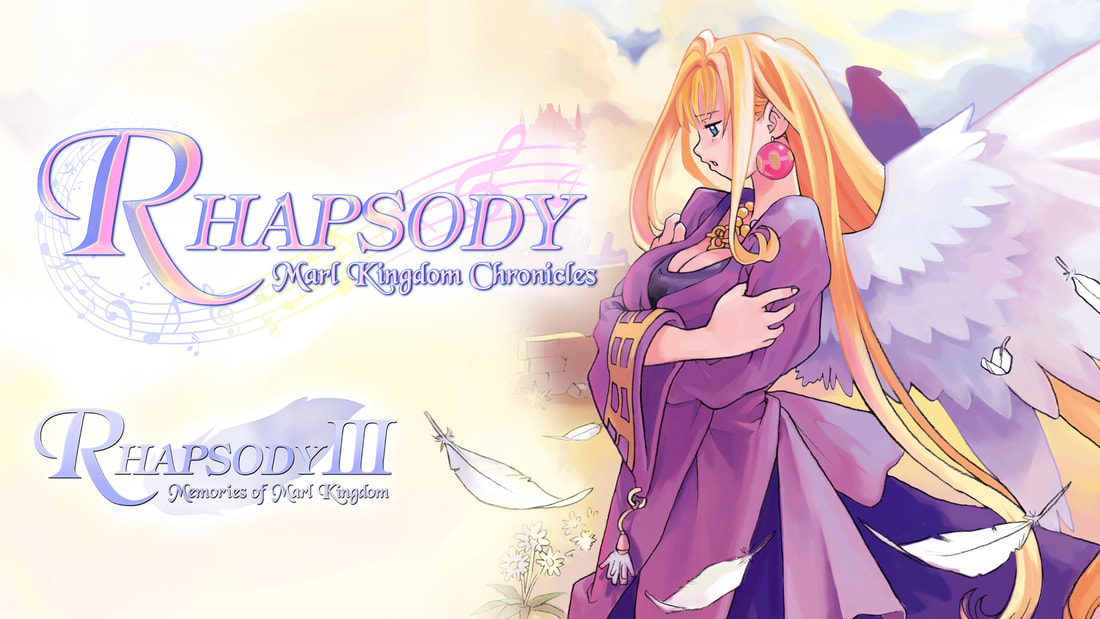
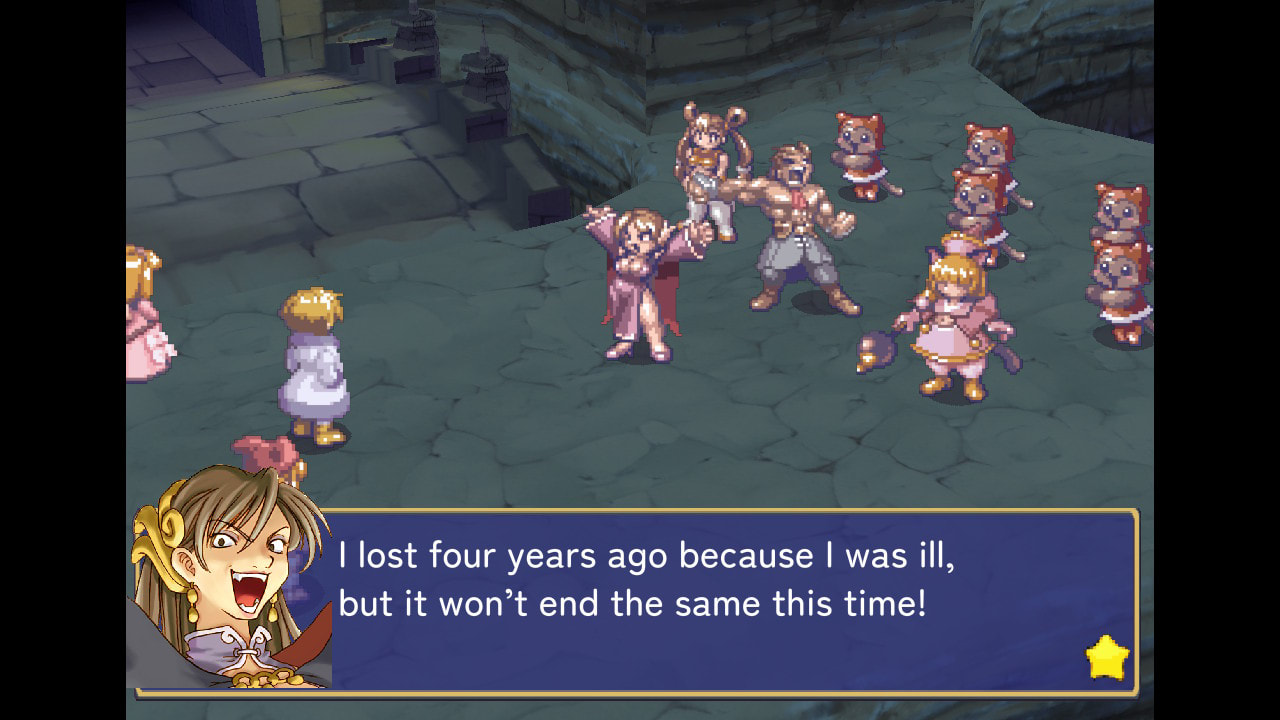
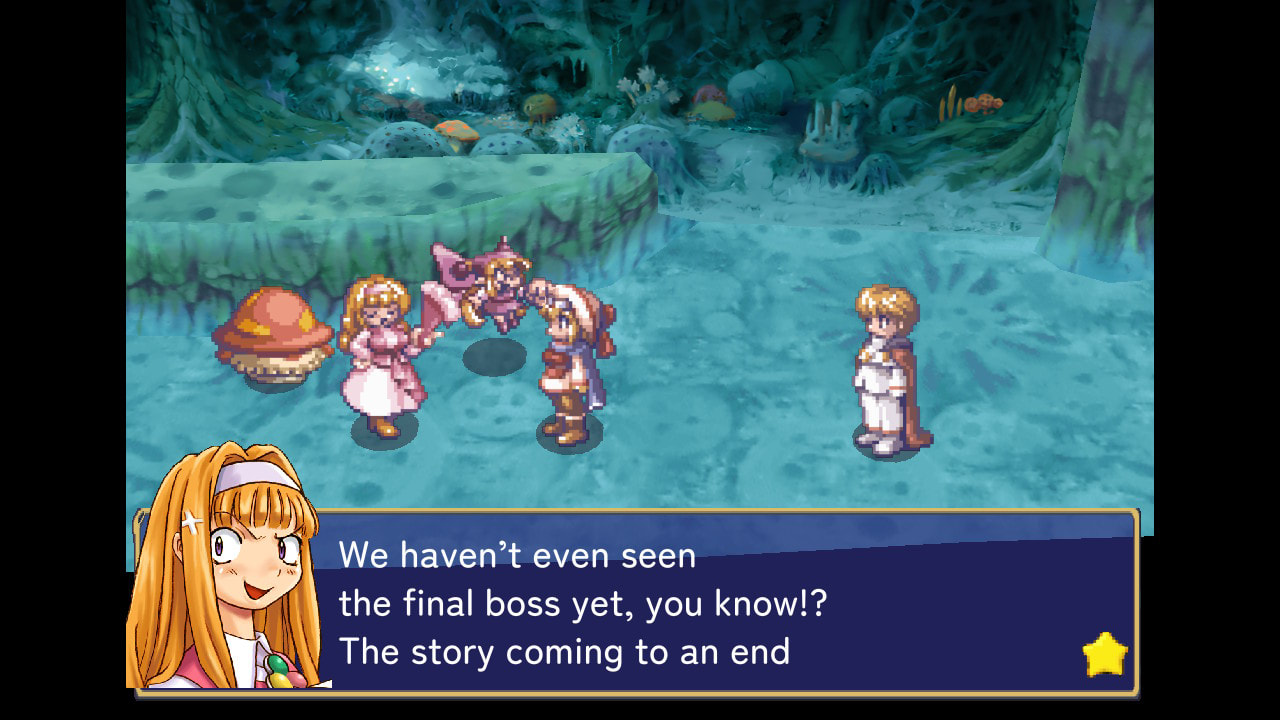
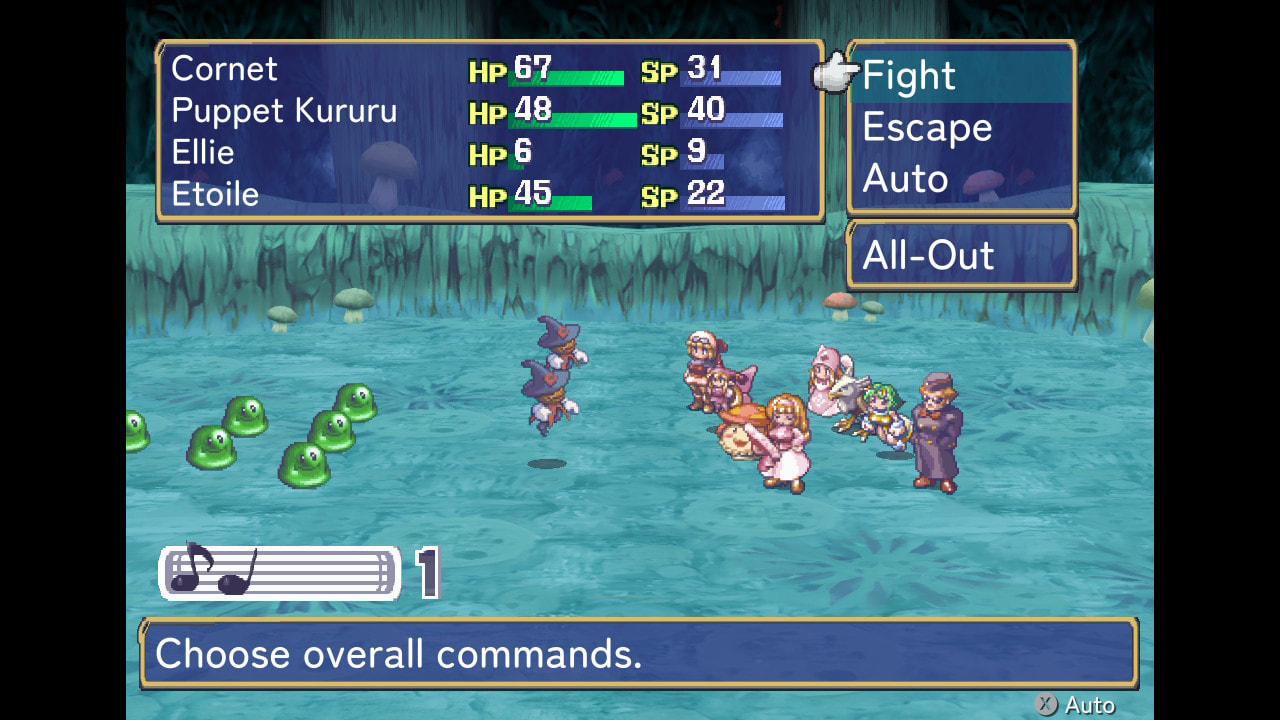
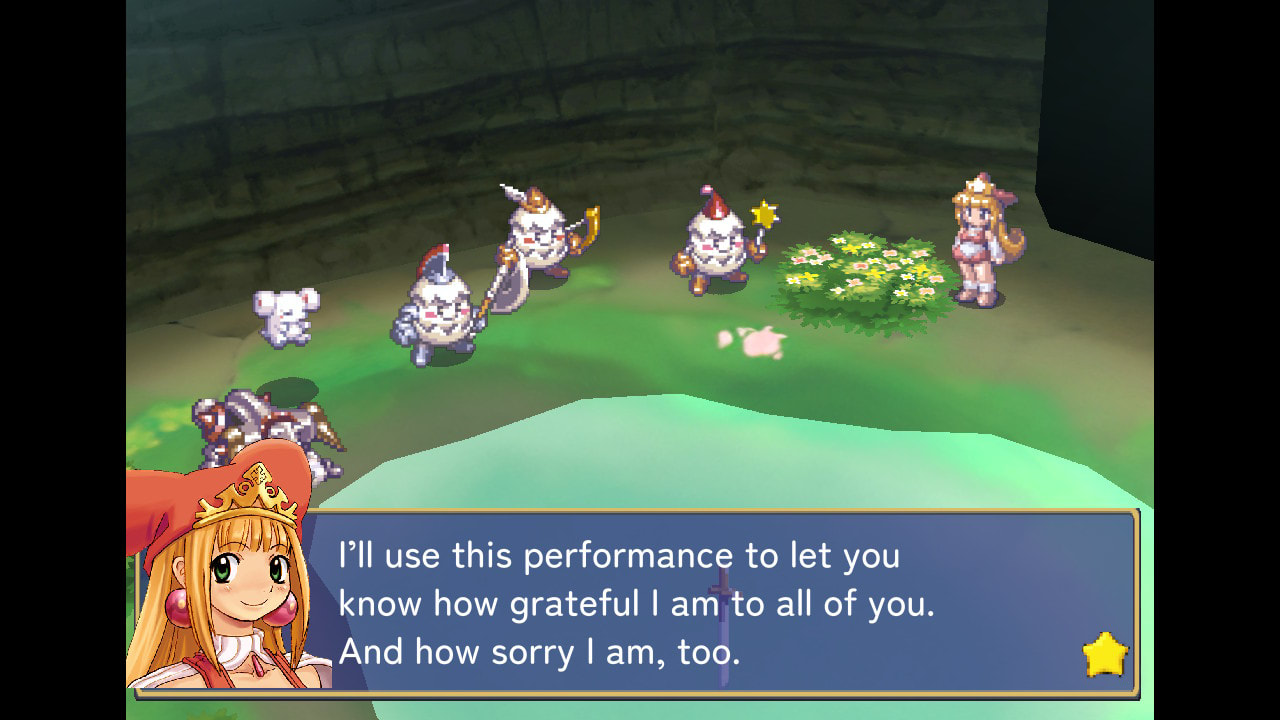



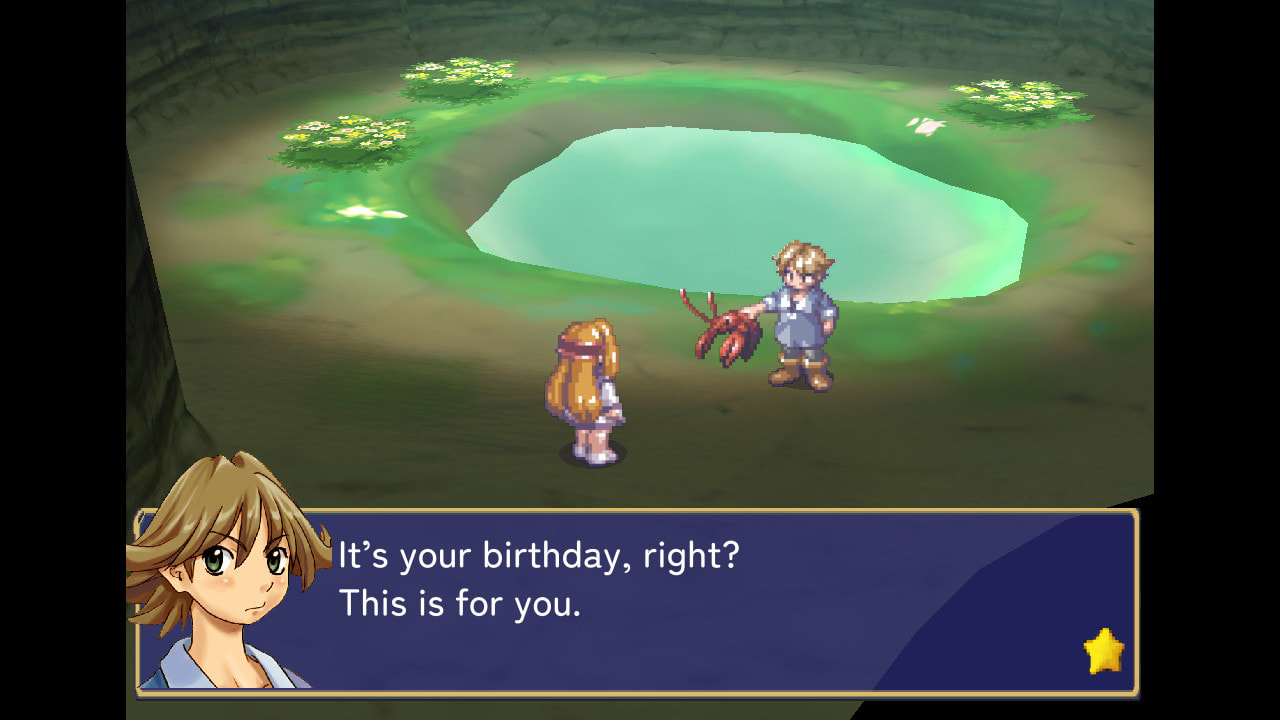
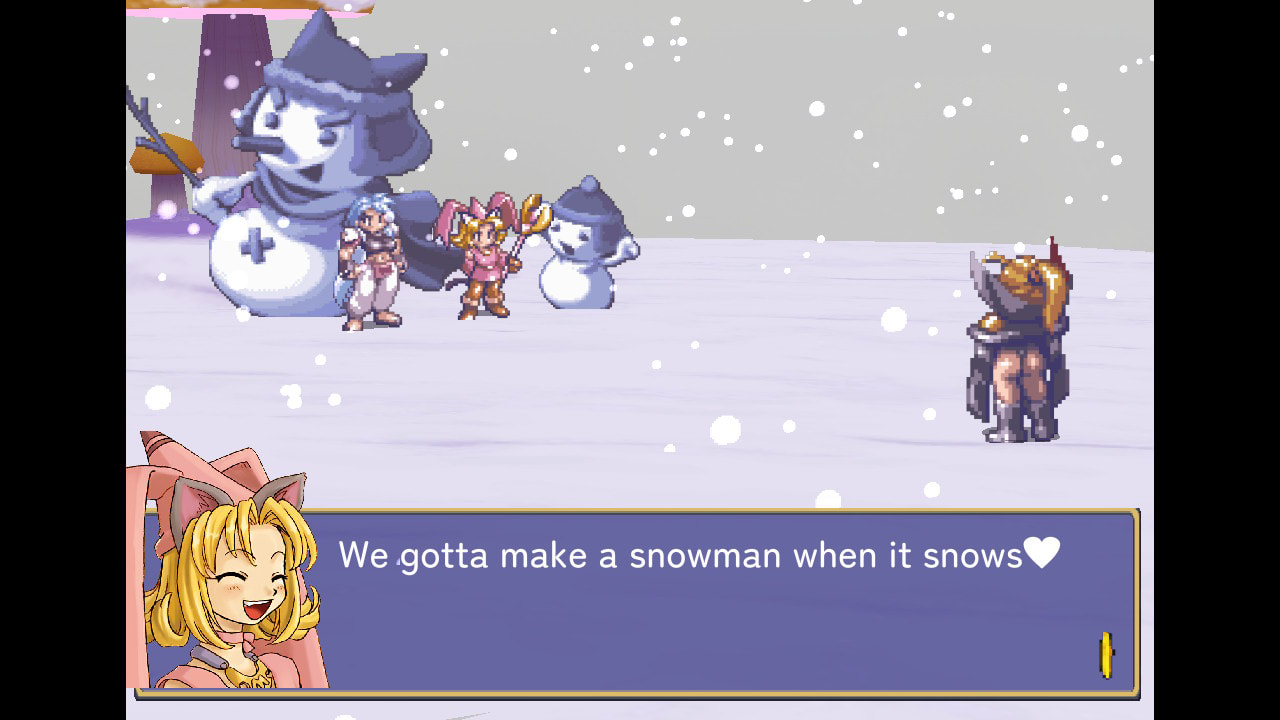
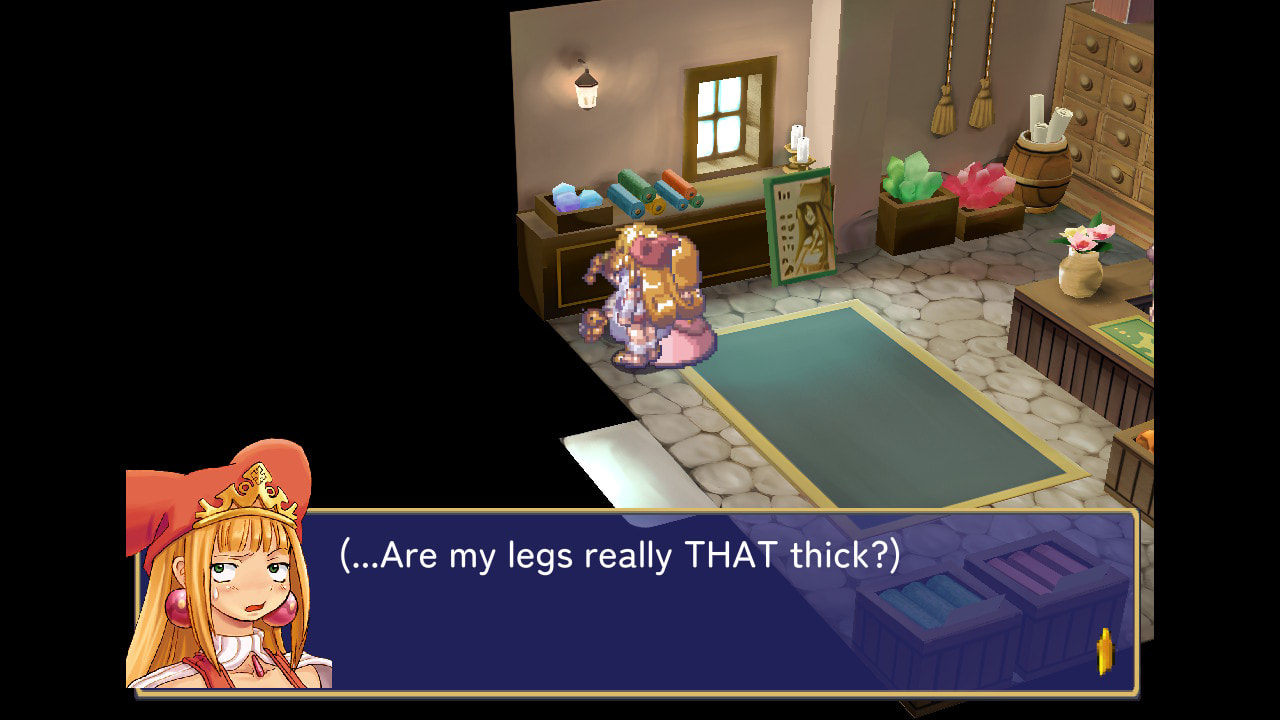
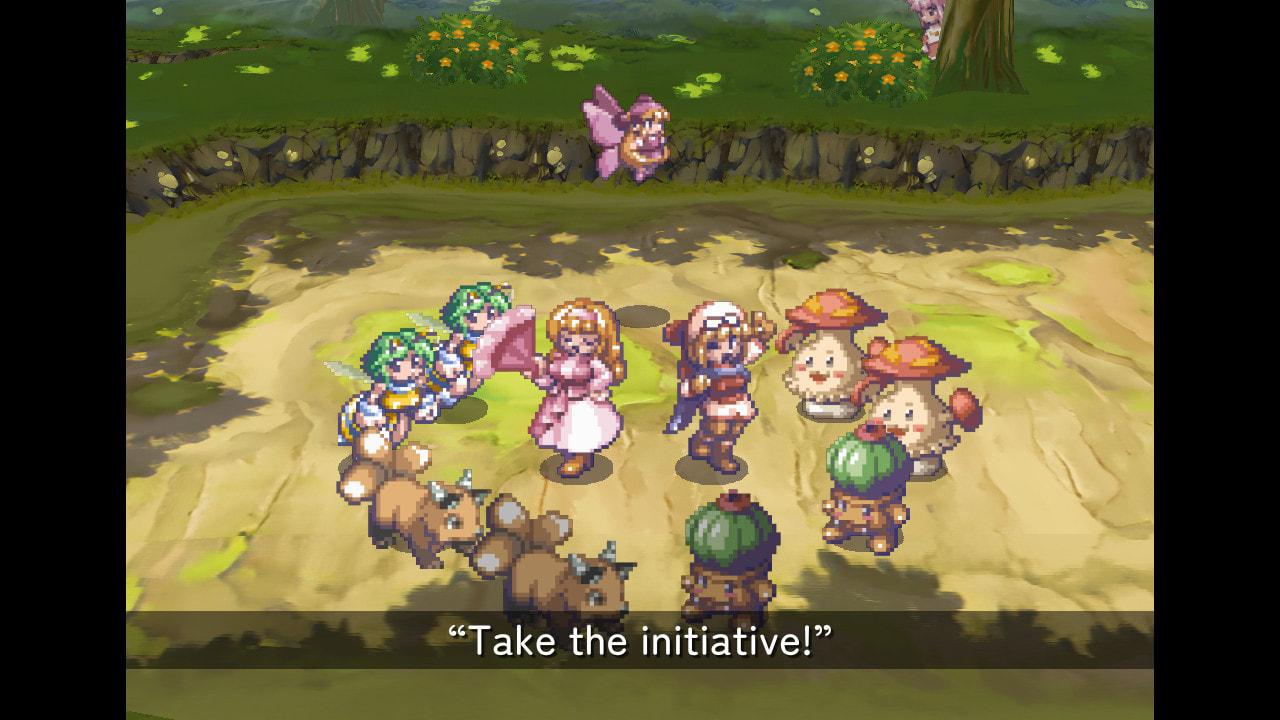
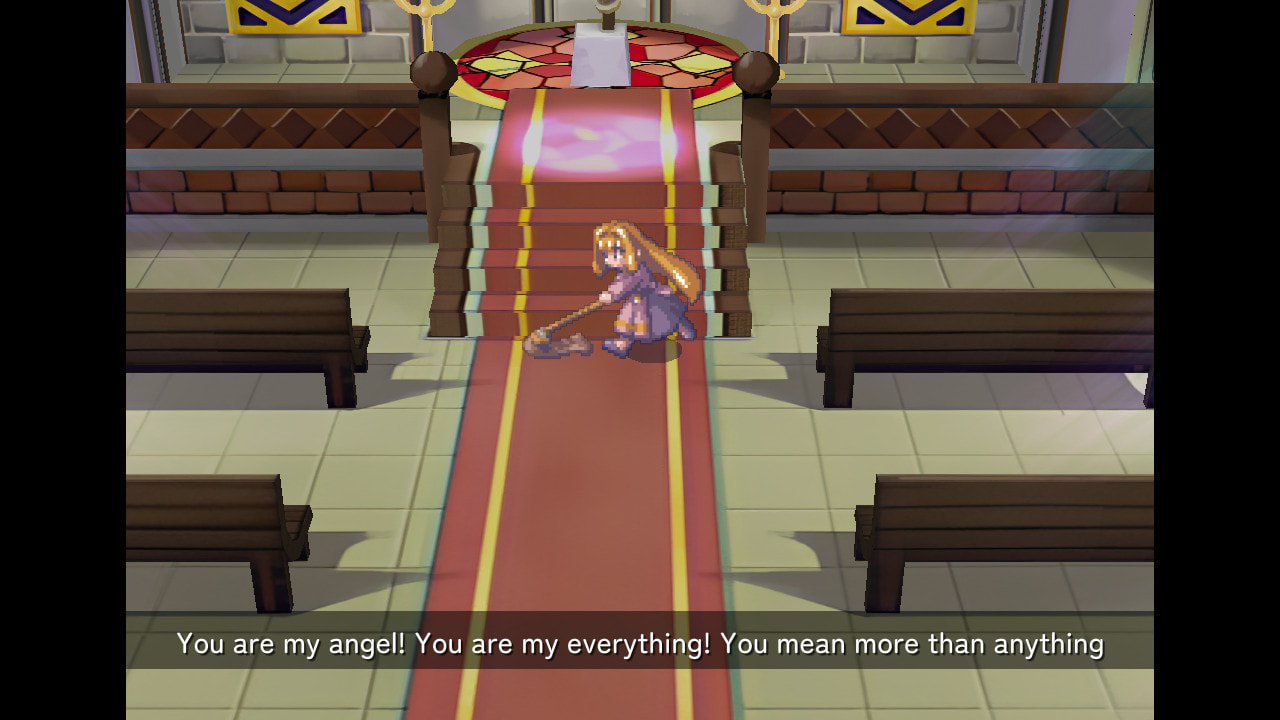
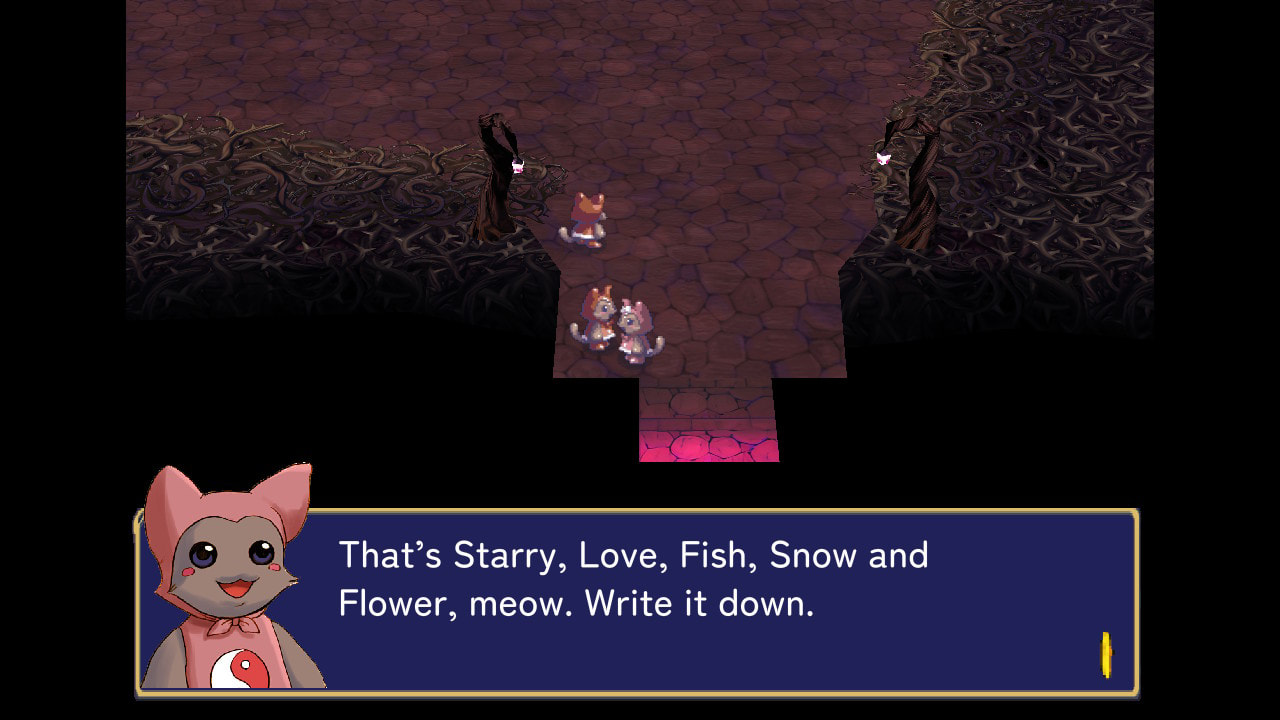
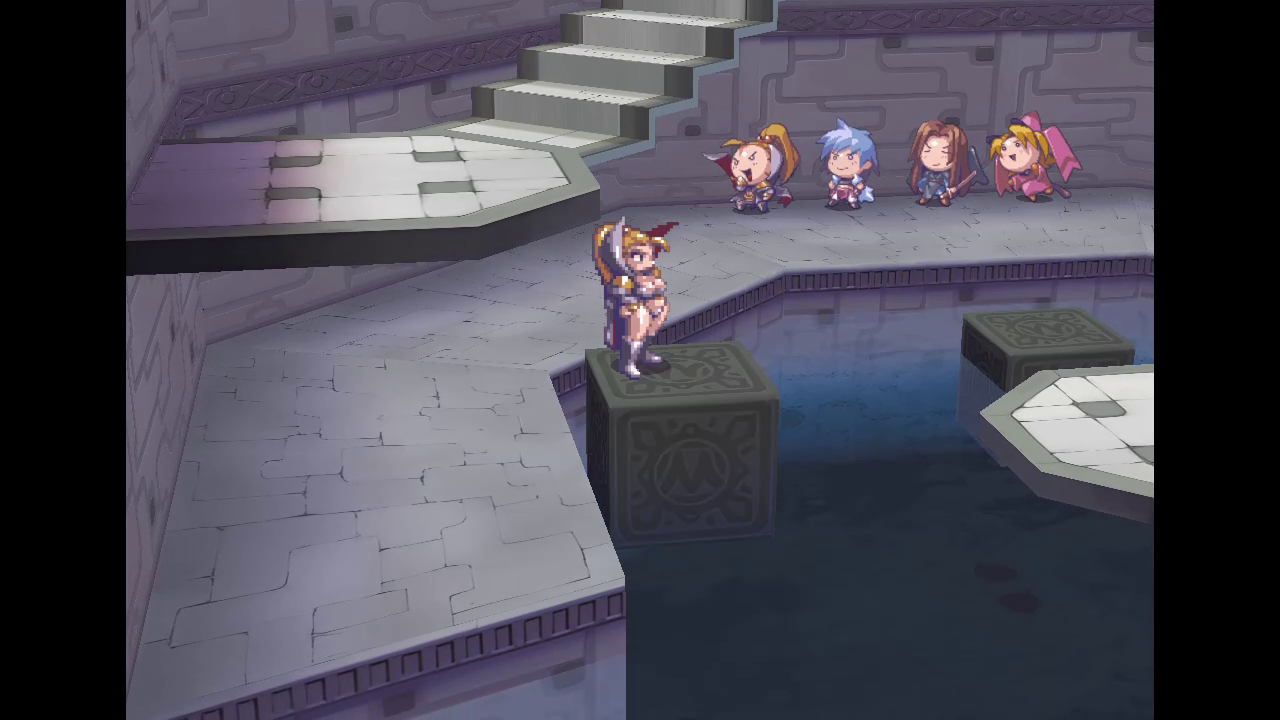




 RSS Feed
RSS Feed